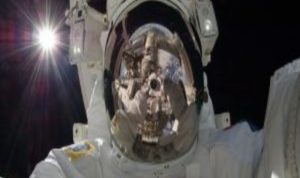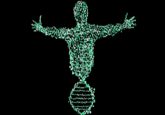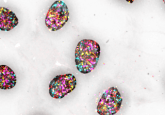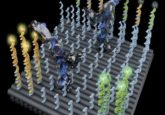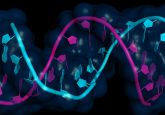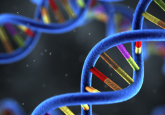Life from above! The helicopter-mounted instrument for detecting life

A new instrument can measure circular polarization, caused by the biosignature homochirality, from a rapidly moving helicopter: expanding possibilities in the search for life in space.
When the latest developments in space travel enabled the intrepid Ingenuity to become the first helicopter to take flight on Mars, the tools available to us for the search for extra-terrestrial life grew by one. Now, a new development could couple with Ingenuity to assist with the search for life in space.
Researchers at the University of Bern (UOB) and the National Centre of Competence in Research (NCCR) PlanetS (both Bern, Switzerland) have developed an instrument that can detect a key biosignature of life – homochirality – from a speeding helicopter. This instrument could make the search for life on other planets significantly more practical, while also providing an insight into new ecological changes on earth.
When a molecule can exist in two mirror image conformations that cannot be directly superimposed onto each other, like a pair of hands, it is referred to as chiral. In biological systems many molecules, such as DNA are chiral and only exist in one of the available left- or right-handed conformations. This insistence on one conformation is called homochirality and is a characteristic property of life.
The team identified homochirality as a detectable characteristic of life and set out to design an instrument that could detect it at fast speeds and from a great distance. It is well understood that, due to the homochirality of biological matter, a small portion of light reflecting off a living organism will travel in clockwise or counterclockwise spirals: a phenomenon known as circular polarization. These spiraling reflections are not produced by abiotic matter.
In 2016, NASA astronaut Kate Rubins became the first person to sequence DNA in space aboard the International Space Station (ISS) (1). This followed the first successful use of PCR in space to amplify DNA, which was conducted by astronaut Tim Peake (2).
This phenomenon is detectable by a device that the team designed, known as a spectropolarimeter. The spectropolarimeter is equipped with lenses that can separate the faint signal of circular polarized light, which typically accounts for less than 1% of the light reflected from a sample.
Until recently, this detection would have required the instrument to be 20 cm from the sample for several minutes. But the efforts of the team over the last 4 years have advanced the technology dramatically, enabling circular polarization measurements to be taken from a helicopter moving at 70 kph, 2 km away from the target.
The team was able to demonstrate that the instrument, named FlyPol, was capable of distinguishing between grass, forests and urban areas in a matter of seconds, revealing algae in lakes and returning no measurements for abiotic environments such as roads. Little imagination is required to realize the capabilities of this instrument attached to a vessel like Ingenuity.
Looking to the future, study co-author Brice-Olivier Demory (UOB) stated that, “the next step we hope to take, is to perform similar detections from the International Space Station, looking down at the Earth. That will allow us to assess the detectability of planetary-scale biosignatures. This step will be decisive to enable the search for life in and beyond our Solar System using polarization.”
But the team are not just focused on the stars; first author of the study Lucas Patty (UOB) highlighted the potential value of the technology in ecology, investigating the impact of deforestation for instance: “Because the signal directly relates to the molecular composition of life and thus its functioning, it can also offer valuable complementary information in Earth remote sensing.”
